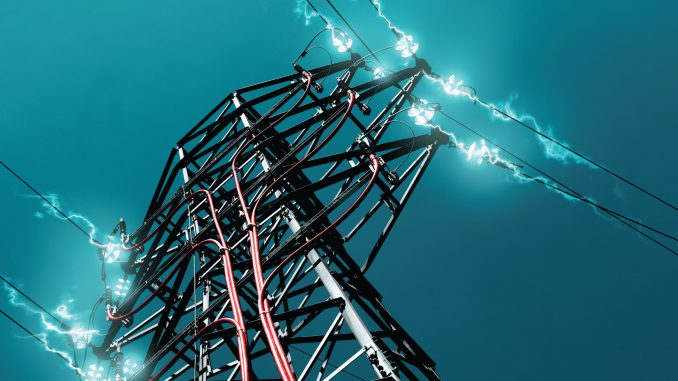
The government has an ambitious target of adding 175 GW of renewable energy capacity by 2022 to the Indian power grid. However, solar and wind power, which contribute the majority of the power share in the renewable energy capacity, are both intermittent and variable. The integration of such a massive quantum of renewable energy capacity with the current grid throws up a lot of challenges with respect to maintaining the voltage and frequency parameters of the grid. Managing the inherent volatility of distributed energy sources and renewable energy generation can compromise grid stability. Reactive power comes into play while addressing grid instability with reference to voltage, also known as voltage instability, by providing power temporarily and maintaining the grid voltage, thereby avoiding excess volatility.
By regulating reactive power, power system parameters such as active power utilisation, voltage stability, power factor, system efficiency, energy cost and power quality can be controlled. Managing reactive power, therefore, offers numerous advantages such as voltage stability, power factor adjustment, system efficiency, cost control, improvement of power quality and longevity of components, given that they are less exposed to wear and tear on account of repeated voltage fluctuations.
Technology basics
There are two different types of reactive power compensation comprising static compensators and dynamic compensators. Static compensators consist of shunt capacitors, shunt reactors and tap changers, which essentially manage the load volatility by temporarily providing reactive power in a few seconds or minutes, while dynamic compensators are instantaneously reactive and assist in voltage control in case of load volatility or supply cuts, owing to some contingency. Further, dynamic compensation has two different varieties classified as dynamic shunt compensation and dynamic series compensation.
Dynamic compensators have better performance than static compensators, owing to their superior performance at low voltage as compared to static reactive devices, considering that it has faster response times and a larger reactive range than the latter.
Dynamic shunt compensation has the ability to automatically support the voltage level in a specific area of the power system. The voltage level is an immediate image of the reactive power balance – too high a voltage means a surplus of reactive power and vice versa. A dynamic shunt compensator automatically and instantaneously adjusts the reactive power output smoothly, compared to the reference voltage level. It improves transient stability by quickly detecting and automatically adjusting its output in response to system events. Currently, two types of dynamic shunt compensation technologies are commercially available in the market: static (non-rotating) var compensator (SVC) and static (non-rotating) compensator (STATCOM).
An SVC is built up with reactors and capacitors and is controlled by thyristors. To provide voltage and transient stability automatically, it measures the actual voltage and provides reactive power to the system automatically, through its capacitor and reactor. This technology has been adopted by more than 800 installations worldwide.
STATCOM is based on voltage source converter (VSC) technology. A comparison with an SVC yields that capacitors and reactors are replaced with power transistors and insular gate bipolar transistors (IGBTs) for intelligent switching of semiconductors. IGBTs operate at a frequency in the kHz range. By connecting DC capacitors on one side of the converter, the STATCOM is able to vary its output with respect to magnitude, frequency and phase angle, in order to provide voltage and transient stability. This technology has been adopted for approximately 20 installations worldwide.
By adding series compensation technology to the existing transmission system, the transmission capacity is drastically enhanced as the capacitor will supply reactive power if needed, while concurrently rendering the system more robust and resilient to extreme load variations. Furthermore, it is a self-regulating phenomenon; as more current is transmitted, the power system will consume more reactive power and capacitors will also automatically produce more reactive power. As a result, the transmission line is utilised more effectively, and more active power can reach consumers on the existing infrastructure.
The way forward
In order to mitigate power quality issues that arise from integration of renewables, steps need to be taken by developers as well as transmission planners and utilities. To this end, the central government’s Green Energy Corridors project is focusing on the integration of large-scale renewable capacity into the national grid as well as enlargement of the balancing area to address renewable volatility. The project entails the creation of transmission infrastructure in renewable-rich states as well as the implementation of control infrastructure solutions, including dynamic compensation devices (SVC and STATCOM), renewable energy management centres and energy storage. Power Grid Corporation of India Limited is coming up with dynamic MVAR compensation, such as STATCOM, and setting up phasor measurement units at strategic locations in the grid. A number of STATCOMs have been installed in the 400 kV grid to improve grid reliability and voltage stability limit. The company has commissioned STATCOMs at Solapur, Aurangabad, Satna and Gwalior in the western region; Lucknow and Nalagarh in the northern region; Ranchi, Rourkela, Jeypore and Kishanganj in the eastern region; and Udumalpet, Trichy, Hyderabad and NP Kunta (Ananthapuram) in the southern region. These devices will provide dynamic stability to the grid under contingent conditions, and a fast and robust system response to severe disturbances in the grid, where voltage recovery is critical.
